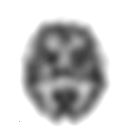
Photo from wikipedia
PurposeTo determine the accuracy of quantitative SPECT, intersystem and interpatient standardized uptake value (SUV) calculation consistency for a manufacturer-independent quantitative SPECT/CT reconstruction algorithm, and the range of SUVs of normal… Click to show full abstract
PurposeTo determine the accuracy of quantitative SPECT, intersystem and interpatient standardized uptake value (SUV) calculation consistency for a manufacturer-independent quantitative SPECT/CT reconstruction algorithm, and the range of SUVs of normal and neoplastic tissue.MethodsA NEMA body phantom with 6 spheres (ranging 10–37 mm) was filled with a known activity-to-volume ratio and used to determine the contrast recovery coefficient (CRC) for each visible sphere, and the measured SUV accuracy of those spheres and background water solution. One hundred eleven 123I-metaiodobenzylguanidine ([I-123] mIBG) SPECT/CT examinations from 43 patients were reconstructed using SUV SPECT® (HERMES Medical Solutions Inc.); 42 examinations were acquired using a GE Infinia Hawkeye 4 SPECT/CT, and 69 were acquired on a Siemens Symbia Intevo SPECT/CT. Inter scanner SUV analysis of 9 regions of normal [I-123] mIBG tissue uptake was conducted. Intrapatient mean SUV variability was calculated by measuring normal liver uptake within patients scanned on both cameras. The intensity of uptake by neoplastic tissue in the images was quantified using maximum SUV and, if present, compared over time.ResultsThe phantom results of the visible spheres and background resulted in accuracy calculations better than 5–10% with CRC correction. Interscanner SUV variability showed no statistical difference (average p value 0.559; range 0.066–1.0) among the 9 normal tissues analyzed. Intrapatient liver mean SUV varied ≤ 16% as calculated for 28 patients (87 examinations) studied on both scanners. In one patient, a thoracic tumor evaluated over 10 time points (18 months) underwent a 74% (3.1/12.0) reduction in maximum SUV with treatment.ConclusionThe results demonstrate quantitative accuracy to better than 10%, and both consistent SUV calculation between 2 different SPECT/CT scanners for 9 tissues, and low intrapatient measurement variability for quantitative SPECT/CT analysis in a pediatric population with neuroblastoma. Quantitative SPECT/CT offers the opportunity for objective analysis of tumor response using [I-123] mIBG by normalizing the uptake to injected dose and patient weight, as is done for PET.
Journal Title: EJNMMI Physics
Year Published: 2019
Link to full text (if available)
Share on Social Media: Sign Up to like & get
recommendations!